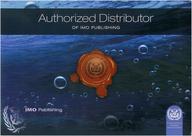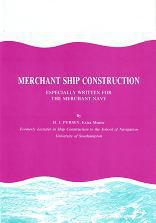Catálogo - LIBROS NÁUTICOS - Teoría del buque, Construcción naval
Merchant ship construction
Autor: H. J. Pursey
Editorial: Brown, Son & Ferguson
Año de edición: 1.983 (7ª edición)
9780851744544
Encuadernación: cartoné
217 pág.
17,0 x 24,0 cm.
38,50€
Contenido:
This book is addressed to those who are studying for the various grades of Department of Trade Certificates and to all who seek a little more knowledge of the ships that they see, build or sail in.
The value of a book lies mainly in the quality rather than the quantity of its contents and a good drawing, combined with a short but clear description, can often be made to take the place of many pages of print. Those who are not trained in mechanical drawing usually find some difficulty in visualising parts of a ship from ordinary plans and elevations and perspective
sketeches are, undoubtedly, the best method of presenting ship construction to sailors. Consequently, the text is here made as concise as possible and is illustrated by a large number of full-page perspective drawings. To avoid confusion, only the most common method of constructing any particular part is given in most cases, although there may be a number of alternatives.
In this revised edition, a number of changes have been made, to conform to current practice and rules and to cover the new Department of Trade and Industry syllabus. The chapter on riveting and a very small amount of riveted construction have been retained, as desirable; but, apart from this, welded structures are described exclusively. This section on oil tankers has been completely rewwritten, whilst a new section on bending stresses and stress diagrams has been introduced. Dimensions are now given in metric units and the text has been rearranged, as necessary, to maintain a logical and clear sequence.
Índice:
SECTION I. GENERAL
Classification of ships
Lloyd´s dimensions
Sections used in shipbuilding
Connections
Strenthening of joints and parts
Riveting
Electric arc welding
General types of ships
Stresses and trains in ships
Systems of construction
Keels
Cellular double bottoms
Frames
Beams
Watertight bulkheads
Systems of pillaring
Massed pillaring
Hatchways
Shell and deck plating
Sheathed decks and wood decks
Bilge keels
Deep tanks
Peaks and panting arrangements
Stems
Rudders and sternframes
Sterns
Shaft tunnels
Stern tubes and propellers
Twin screws
Superstructures and deckhouses
Raised quarter decks
Bulwarks
Engine and boiler rooms
Hatch beams and covers
Hawsepipes
Masts and derrick posts
Ventilators
Refrigerated ships
Strengthening for ice navigation
Pipes to tanks and bilges
Special types
SECTION II. THE CONSTRUCTION OF OIL TANKERS
General requirements
General arrangements
Structure in the bottom
Structure under the deck
Side framing
Longitudinal bulkheads
Cross ties
Transverse bulheads
Framing at ends of ship
Cofferdams
Hatchways
Superstructures
Freeing arrangements
Pumping and piping
Tests
SECTION III. SHIPYARD PRACTICE
Preliminar drawings
Preparations for building
Building the ship
Prefabrication
Launching the ship
SECTION IV. SURVEYS, STEEL, TONNAGE, FREEBOARD AND LOADLINES
Surveys
Types and testing of steel
Tonnages
Freeboard
Loadlines and tonnage marks
SECTION V. LONGITUDINAL STRESSES AND STRESS DIAGRAMS
Bending stresses on girders
Longitudinal bending stresses on ships
SECTION VI. DEFINITIONS
Definitions
Precio: 38,50 €, I.V.A. incluido (4%)
[ Volver ]


